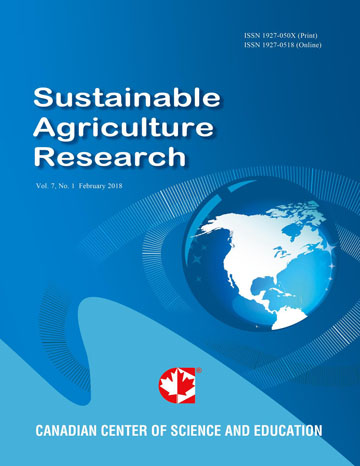Profitability of Organic Vegetable Production via Sod Based Rotation and Conventional Versus Strip Tillage in the Southern Coastal Plain
- Mona Ahmadiani
- Chun Li
- Yaqin Liu
- Esendugue Greg Fonsah
- Christine Bliss
- Brent Brodbeck
- Peter Andersen
Abstract
There are little economic data concerning the profitability of organic vegetable crops in the Southern Coastal Plain, especially in reference to sod-based rotation and tillage alternatives. A three-year experiment was conducted at the North Florida Research and Education Center-Quincy involving a crop rotation sequence of oats and rye (winter), bush beans (spring), soybean (summer) and broccoli (fall). Bush beans and broccoli were the cash crops. This paper presents analyses of the riskiness of organic production utilizing years in bahiagrass prior to initiating the crop rotation sequence and conventional tillage (CT) versus strip tillage (ST). Methods of “Risk-rated enterprise budget” and “Analyses of Variance-Covariance Matrix (ANOVA)” were utilized for determining relative profitability, and coefficient of variation was applied for measuring riskiness of each treatment. Three years of bahiagrass prior to initiating the crop rotation sequence, in combination with conventional tillage, had the highest profitability and ranked as the least risky scenario. The second most profitable treatment was conventional tillage with four years of bahiagrass. Focusing on strip tillage, four years of bahiagrass with strip-tillage ranked third in term of profitability.
- Full Text:
 PDF
PDF
- DOI:10.5539/sar.v5n4p46
Index
Contact
- Joan LeeEditorial Assistant
- sar@ccsenet.org
